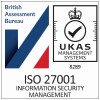Wind. Rain. Snow. Heat. Not unusual events but the records on their severity and frequency are being rewritten - annually it seems. For general insurers, no event in these predictably unpredictable times should result in a logistical knee-jerk.
The technology to cover the hard yards involved in surge planning before – instead of during – the event is available, quick to implement, easy to use and relatively inexpensive. Let's look at what 'good' can look like when claims surges hit. There are three elements that lay the foundations for getting ahead of any catastrophe in the general insurance world:
1 - Online rather than on-hold
2 - Prepare your customers at the first sniff of problems
3 - Ditto your supply chain
Dissatisfaction and cost brew when customers expect their insurers to address their needs quickly. But they get exponentially worse when surge events damage property and combine with the same customers wondering what on earth is happening in the absence of updates or action.
Let's look at each in turn and how the rise of no-code digital claims handling such as that pioneered by 360Globalnet can reduce cost and help customer retention.
Online rather than on-hold
Every time a customer uses the phone to contact their insurer during a surge event, the claim will slow and the cost and dissatisfaction will rise. People hate being on hold and this is exacerbated when serious stuff is happening to them. The first priority for any general insurer is to have adequate systems for moving all but the most serious cases into online self-reporting. When this, in turn, is backed by digital automation and triaging, then the hard yards become much easier to manage.
Prepare your customers
Without proactive contact from their insurer, the vast majority of customers will justifiably hammer the call centres in an emotional state when disaster strikes. Insurers armed with weather forecasts will always have a good idea which areas will be worst affected. 48 to 36 hours out. By using an integrated digital claims platform such as 360SiteView, claims departments can get ahead by sending a link via email and SMS before the event to every customer who might be affected. The message is clear, direct and encourages them to use a fast self-report form that is linked when damage occurs. This alone can shift 80% of claim handling online.
These forms offer photo and video capability as well as fields to allow the automated triage of incoming claims to establish priority. It helps massively if your technology then digitalises the whole claims process through to settlement.
Companies using Interative Voice Response (IVR) can even offer a link that is pushed automatically via SMS when the caller enters their mobile to seamlessly move callers off the line and into a smooth and comprehensive self-reporting process. When worded correctly, the digital prompt can give customers the reassurance of speed, action and notification via automated SMS acknowledgements and multi-channel updates when anything moves or changes. This ensures customers' expectations and their hopes are managed. For those who still stay on the phone, call handlers can establish severity, take action on the very serious then cut call length and send an online link for everything else.
Prepare your supply chain
Finally, the piece of the jigsaw where no-code integrated services really come together is in the handling and preparation of supply chains. 360Globalnet's systems are designed around automation beyond notification. It is possible to knit an entire supply chain into an integrated surge handling protocol by using a similar approach as that for policyholders. Specifically, this involves pre-notification or resource interrogation in the days leading up to a likely surge. Suppliers for home and motor claims, plus loss adjusters, are looped into an integrated system for notifying capacity, materials and transport logistics. This resource planning then informs response prioritisation. Suppliers, like policyholders, don't do well with surprises or in picking up the telephone if things go wrong. By making them part of the integrated digital whole, it is possible to design surprises out for all parties to a claim.
In summary, we know that surges will be more frequent and more severe. It is therefore time for insurers to hold onto customers when it counts by the huge integrated, adaptable, digital benefits of no-code technology to ensure their responses to cope with the sheer expectedness of the unexpected.
360Globalnet helps companies across the globe get ahead in digital claims. We would be happy to tell you how and for how much. You may be surprised.
